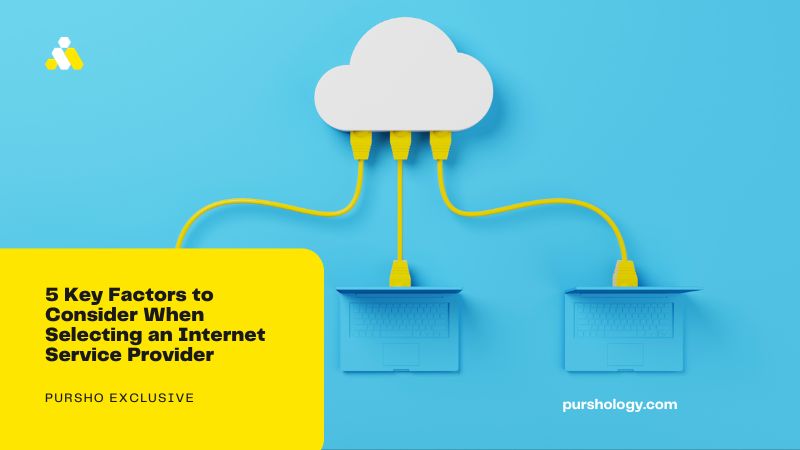The internet is no longer a luxury but a necessity of modern life. People’s use has gone way beyond browsing social media and checking emails to working remotely, viewing lectures and submitting assignments, shopping, streaming on-demand videos, gaming and so much more.
This growing dependency has made it crucial to have a reliable internet service provider (ISP) with offerings suited to your specific needs.
ISPs like Orange Jordan, for example, present their subscribers with various plans, bundles and packages that are competitively priced and expertly designed to satisfy their requirements.
Still, you need to develop ironclad selection criteria addressing your priorities. With this in mind, here are five essential elements to consider when choosing an ISP:
1. Availability
Whether you’re dissatisfied with your current provider or moving to a new area, you must first check which ISPs are available in your location and how reliable their services are.
ISPs’ coverage can vary dramatically from one place to another, even within the same city or neighborhood. This factor can influence where you decide to live, so before you get your heart set on a provider, ensure they offer strong coverage in your desired area.
2. Type of Connection
ISPs offer different types of internet connections. Here, you need to focus your research around two questions: What type of connection is most suitable for your needs, and can your location support it?
For instance, fiber optic internet is known for having the fastest speeds and the sturdiest connections. However, it needs the right infrastructure to be properly installed and utilized.
Similarly, Digital Subscriber Line (DSL) connections require a landline to be fully functional. If your house isn’t wired for a telephone line, setting up a DSL connection can take some time.
All of this doesn’t necessarily mean that if you don’t have the correct infrastructure, a specific connection type is ruled out for you. In some areas, you can pay a technician to install the proper setup (although that could be an added expense).
The following are some connection types ISPs commonly offer:
- DSL: This connection uses existing telephone lines to transmit data. It is a widely available, affordable option and well-suited for moderate internet users. However, the speed is generally slower than other types. It also varies depending on the distance between your location and the internet provider’s hub.
- Fiber Optic: This connection transmits data back and forth through pulses of light traveling along thin glass wires. It is the most expensive option, but it also provides the fastest and most reliable speeds.
- Fixed Wireless: A type of 5G or 4G LTE wireless technology, this connection allows for fixed broadband access through radio frequencies instead of cables. It’s inexpensive, provides decent speeds and requires no infrastructure. However, in some instances, it can be vulnerable to signal interference.
Understanding each type of connection is crucial to finding the one that best suits your usage and budget.
3. Download and Upload Speeds
Speed is integral to an ISP’s package offerings because, without adequate bandwidth, all your online activities will likely screech to a buffering halt.
Upload speed measures how long your devices take to send data to the internet. This includes posting photos or text on social media, sending emails, using video conferencing applications and more. Because most people tend to download more often than upload, those speeds are generally much lower, with the standard set at 3-5Mbps.
Download speed, on the other hand, is your internet connection’s ability to pull data from the internet and into your device. Whenever you’re streaming video or music, gaming, browsing the internet or downloading files, you’re using your download speed. The higher this number is, the faster you can do all those activities. The standard for download speeds is about 25Mbps.
If you know your current internet usage, you can compare your requirements to the different offers and packages ISPs provide. Keep in mind that certain activities need more bandwidth than others. For example, streaming 4K video requires much more download speed than checking emails. So, you might also want to look into what other bundles are available in case you need an upgrade.
4. Price
There’s usually a correlation between faster speeds and higher prices with ISPs. Therefore, defining what you’re getting for the cost is essential.
Some internet plans limit how much data you can use per month before incurring additional charges. You’ll need to evaluate your usage beforehand so you don’t get hit with overage fees or see your connection speed throttled.
Additionally, review the promotional and introductory prices for new customers, as these tend to go up after a few months. Determine how long you can expect to pay that initial price before rates change.
You can also take advantage of limited-time offers and special discounts by checking with different providers. For example, currently, Orange offers include different types of 5G Internet packages ranging from JD 23 to JD 26 per month with speeds of up to 400 Mbps.
5. Customer Support and Technical Assistance
No matter how reliable an ISP’s services are, you might need to contact customer service for downtime or technical issues. As such, before committing yourself to a provider, you should research their reputation and how they’ve handled similar issues.
Read reviews from other subscribers who had experience with their support team and consider how you can reach them (phone, email, chat, etc.). Also, find out what their technical assistance entails and how quickly you can expect a resolution.
The Best Fit for You
Starting with these five elements, you’ll be able to narrow down your choices and find the best ISP for you. Remember to factor in your needs, budget, usage and location into your decision, and you’ll be well on your way to a smooth internet experience.




